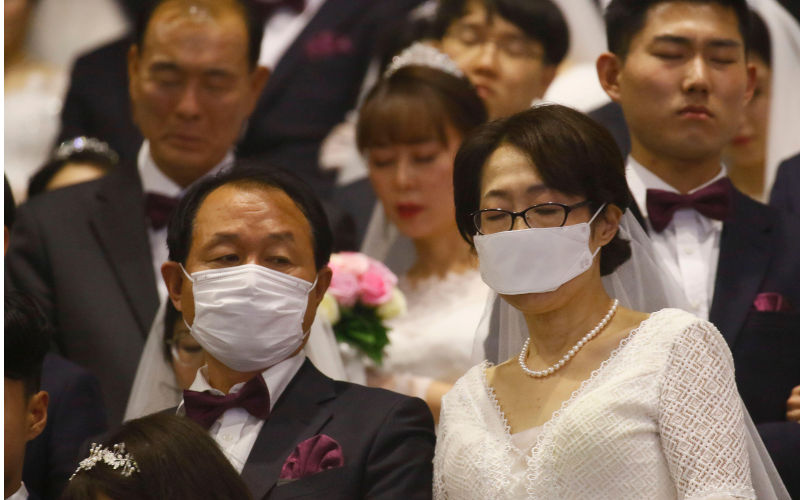Late marriage the new norm in South Korea
September 14, 2025
In 2024, South Korea set another demographic record, with women marrying for the first time at a historic high average age of 31.6, while men did so at an average age of 33.9.
Since 2021, more women in their early 40s have married than women in their early 20s. These numbers show how profoundly social expectations have shifted within just one generation.
The assumption that marriage should take place in the early stages of adulthood has long been taken for granted in South Korea. But those assumptions are now breaking down. Most first marriages still occur in people’s 20s and 30s, yet the steady rise of marriages later in life shows it is becoming less of a fixed milestone and more of a personal choice that can be made, or deferred, on one’s own time.
This trend is unfolding alongside the more familiar demographic crisis of South Korea’s birth rate. The country’s fertility rate was 0.75 in 2024, the lowest in the world for the fifth consecutive year. Despite years of concern, policy responses have focused narrowly on incentivising young couples to marry and have children by offering subsidised loans, housing support and direct cash payments. These measures largely exclude the people who now make up an increasing share of the marriage market – those marrying later in life or choosing not to have children at all.
Economic pressures remain a central factor. Housing costs continue to soar, stable jobs are scarce and real wages have stagnated. For many, the economic threshold required to establish a household simply feels out of reach. For highly educated women, marriage brings another set of trade-offs. Even in 2025, marriage and child rearing are widely perceived as potential obstacles to professional advancement given the unequal division of domestic work. Faced with these realities, many women delay or opt out of marriage altogether, a decision that reflects pragmatism rather than a rejection of family life.
Yet marriage is not vanishing. Instead, the institution is changing shape. One in five newlywed couples in 2024 involved a bride older than the groom – a pattern that would have been unthinkable a generation ago. Many of these later-life unions are dual-income, voluntarily child-free and based on compatibility, rather than obligation. While they are unlikely to boost fertility rates, they signal a loosening of rigid gender norms and the growth of more egalitarian relationship models.
At the same time, marriage has become increasingly selective and stratified. Since the late 1990s, the number of marriages each year has nearly halved. The steepest declines are among less-educated and lower-income groups, where insecure work leaves men unable to meet the lingering expectation of being a primary breadwinner. Japan and Taiwan see similar dynamics, with economic precarity contributing to declining marriage rates. In South Korea, marriage is now seen less as a universal life stage and more as a marker of privilege for those with stable incomes and secure jobs.
Policy has struggled to keep up with this transformation. Family support programs remain tied to outdated assumptions that couples marry and have children in their 20s. This leaves couples who marry later outside the reach of benefits, even though they still face housing and employment pressures. Non-traditional arrangements — such as cohabitation, single-parent families or multi-generational households — are largely invisible in official frameworks, despite their growing presence.
Bridging this gap requires structural reform. Support should be tied to household needs rather than parental age. Programs also need to broaden their definitions of family, acknowledging that not all households follow the traditional path. Large-scale surveys and citizen deliberation panels could give policymakers clearer insights into how life courses are evolving and provide a firmer base for designing responsive policies.
South Korea’s demographic resilience will not come from urging everyone to follow a single life script. It will depend on building conditions that allow diverse, sustainable and self-directed ways of living. Late marriage, so often portrayed as a crisis, should also be recognised as an opportunity to reimagine family life in ways that resonate with contemporary values of equality, autonomy and inclusion.
South Korea’s challenge is not simply to raise the birth rate. It is to redesign its institutions to align with how people actually live. Only by doing so, can South Korea build a more flexible and socially sustainable future.
Goeun Shin is Associate Professor at the University of Social Sciences and Humanities, Vietnam National University, Ho Chi Minh City.
This work was supported by the Core University Program for Korean Studies of the Ministry of Education of the Republic of Korea and Korean Studies Promotion Service at the Academy of Korean Studies (AKS-2022-OLU-2250002).
Republished from East Asia Forum, 5 September 2025
The views expressed in this article may or may not reflect those of Pearls and Irritations.
